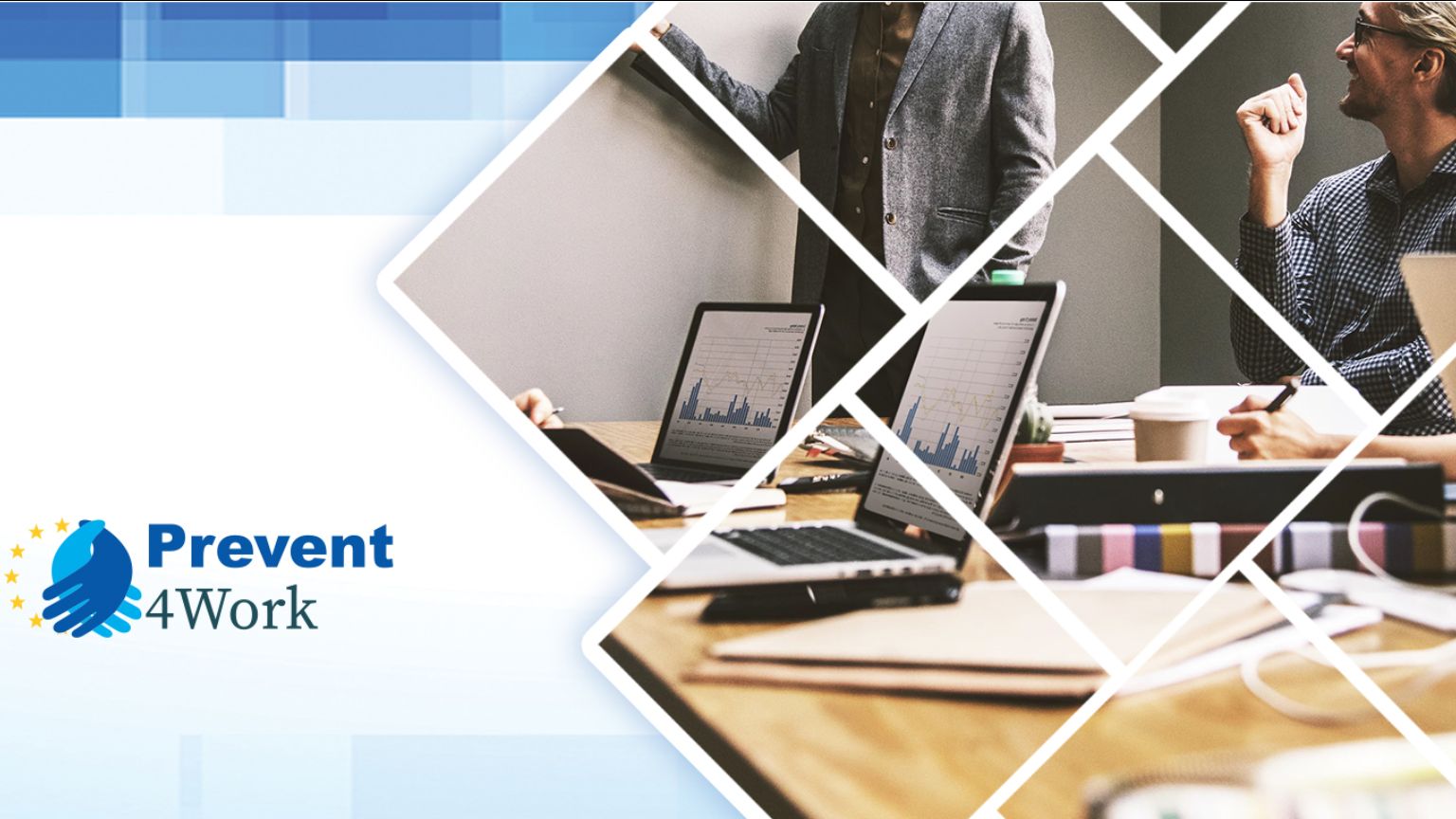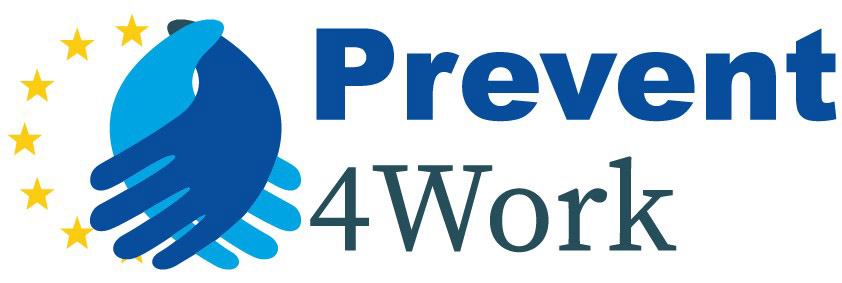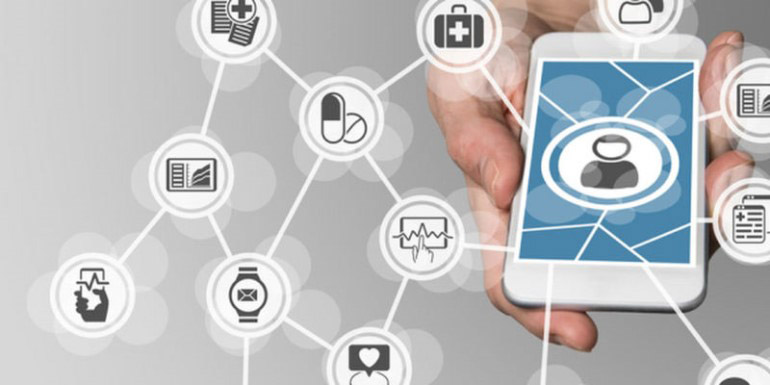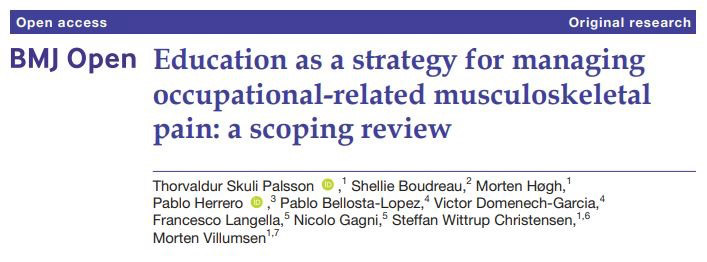
2nd Prevent4Work Newsletter

Welcome to the second newsletter of Prevent4Work!
Take a tour and navigate through our pages in order to read our latest news and developments, as well as to find out how P4W consortium has continued to deliver on its mandate despite the COVID-19 pandemic.
THE PROJECT AND ITS LEARNING RESOURCES

We have successfully completed the second year of the project and we are very happy to have managed to achieve the proposed objectives despite the global pandemic. Both the WPs and the planned results have been satisfactorily finalized. The interim report presented to the EACEA was favorable and this derives from the commitment of the entire consortium and from the total collaboration with the partners, with whom we have established a fluid communication.
We are now moving forward with the development of the pilot actions foreseen by the project in which the resources and opportunities for learning, teaching and training will be freely accessible and available in electronic format
Users will have access to the mHealth tools through the APP and the training platform. A series of professional refresher courses and training programmes have also been developed for an audience, both multiprofessional and from higher education institutions, enterprises and the wider socio-economic environment, including trainers, physiotherapists, doctors, students, graduates, teachers and lecturers.
In view of the second congress of the project to be held in November this year and taking into account the global health crisis we are experiencing, we are all doing our best to follow the established path of our project.
OUR WEBSITE

The Prevent4Work website is now completed and has been enriched with new sections and features required by the evolution of the project itself.
We launched the website with a basic structure and layout to show the most relevant contents of the project. We added the Events section, which allowed users to check important information regarding the three Symposiums, such as the programs, the biography of expert speakers, a list of FAQ, etc. Later we incorporated the rules to participate to the Idea Contest as well as a contact form. Finally, at the conclusion of the first congress, we uploaded some interviews recorded during the event.
After a short period of time, we realized that it would be good to give visibility to the organizations that are participating in the project, as well as giving a chance to other business/entities to join us. We made an Observatory section in which organisations can send us a contact form to participate. The most relevant information is presented through a FAQ implemented in an accordion structure.
We have given public access to the e-learning platform. The first courses will be available in September, both via the platform and the APP.
Last but not least, we needed to give users the chance to see all the dissemination contents generated throughout the project, so we composed a blog post with all the content generated so far. We also added this to the Results section, where we have integrated an automated YouTube feed, so that the videos posted on the channel are synchronized to the web page.
Prevent4Work publication on BMJ

Prevent4Work researchers published a study on British Medical Journal (BMJ) entitled “Education as a strategy for managing occupational-related musculoskeletal pain: a scoping review”.
The study presents a broad overview of resources available for healthcare professionals and the general public regarding work-related musculoskeletal pain.
The objective of our scoping review was to map the existing educational resources for work-related musculoskeletal pain, and the effects of implementing educational strategies in the workplace on managing work related musculoskeletal pain. We detected that a majority of studies concluded that education positively influences work-related musculoskeletal pain.
However, many studies provided a limited description of the education material and used different methods of delivery, so we consider that there is a gap in knowledge regarding the best content and delivery of education of material in the workplace.
INFORMATIVE VIDEOS

Since the last newsletter we have been busy creating short, informative videos on the evidence related to WMSDs. There are now more than 25 animation videos on topics from “best practice recommendations” to “evidence for workplace interventions” and the best news is: they are all freely available on YouTube and Facebook.
Each video is based on the highest level of evidence, also known as systematic reviews. A group of researchers from Denmark and Spain have collaboratively written the manuscript, which has then been narrated (in English) and afterwards animated by VITECO in Italy. Each video has been peer-reviewed by all participants and are now being combined with written materials into an educational framework. However, the videos can also be found individually on our Facebook and YouTube page for people with a broad interest in the topic.
RISK ASSESSMENT QUESTIONNAIRE
One of the project milestones included the development of a questionnaire, “P4Wq”, to detect factors related to the development of WMSDs and thus to identify subjects at risk to target prevention strategies.
The term MSD denotes health problems of the musculoskeletal system, i.e., muscles, tendons, skeleton, cartilage, vascular system, ligaments, and nerves; they range from light and transitory disorders to disabling injuries and permanent disability, up to the layoff.
Current evidence supports the multifactorial source of this condition. In fact, both physical factors (e.g., manual handling of loads, working in awkward postures, repetitive work) and psychosocial factors (e.g., mental stress, pain believes, kinesiophobia, job satisfaction) are responsible for WMSDs.
Consequently, a holistic approach is currently needed.
We are working on the process of development and validation of this useful screening tool.
The first risk assessment questionnaire for work-related diseases with a biopsychosocial approach is coming soon!
2nd Prevent4Work Symposium

The 2nd Prevent4Work Symposium will take place on November 27th, 2020 in conjunction with the ”2nd Musculoskeletal Symposium – Working with pain” in Aalborg, Denmark. The symposium is organized by the Department of Physiotherapy, University College of Northern Denmark, and the Department of Health Science and Technology, Aalborg University, and funded by Prevent 4 Work Erasmus + EU project.
International experts will present the latest developments within musculoskeletal disorders and the perspectives for dealing with such disorders in relation to work and recreation.
The following speakers will be present Dr. Mary O’Keeffe from the University of Sydney, Dr. Jonathan Hill from Keele University, Prof. Andreas Holterman from The National Research Center for Work Environment in Denmark, Dr. Einar Baldvin Baldursson, a specialist in work- and organizational psychology from Aalborg University and Prof. Pascal Madeleine from Aalborg University.
The full program will be published soon. Online participation is free. The deadline for registration is November the 1st 2020. All participants will have the opportunity to present their own projects in the Scientific Program within Musculoskeletal Disorders by submitting an abstract according to the guidelines.

This project has been funded with support from the European Commission.
This communication (website) reflects the views only of the author and the Commission cannot be held responsible for any use which may be made of the information contained therein.
Agreement n. 2018-2381 / 001 – 001 600920-EPP-1-2018-1-ES-EPPKA2-KAPKA2-KA


No Comments :